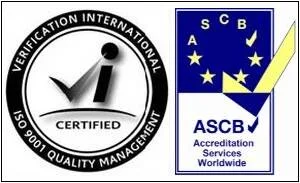Ensuring compliance, (e)co-nsciously
To apply our waste delivery protocols and ensure compliance with national and international regulations for environmental protection and vessel security, we implement the following concepts & practices
Compliance with Regulations
Advance Notification
Form
Safety
Measures
Documentation and
Record-Keeping
Training and
Awareness
Continuous
Improvement
Clear Communication
Advance Notification Form
We have established a standardized advance notification form for waste delivery to port reception facilities. This form must be submitted at least 24 hours in advance of the vessel’s arrival (or as required by local regulations). The form includes detailed information about the type and quantity of waste to be delivered, as well as any special handling or disposal requirements.
Clear Communication
We emphasize clear communication among all parties involved in the waste disposal operation. This includes the vessel’s crew, port reception facility personnel, waste management companies, and relevant authorities. We ensure that all parties are aware of their responsibilities and obligations to ensure the safe and compliant handling of waste.
Compliance with Regulations
We strictly adhere to national and international regulations governing waste disposal. This includes compliance with the International Convention for the Prevention of Pollution from Ships (MARPOL) and any additional local regulations. We regularly review and update our protocols to reflect any changes in legislation or best practices.
Training and Awareness
We recommend comprehensive training to vessel crew members, port reception facility staff, and waste management personnel. This training will cover proper waste handling techniques, safety procedures, and environmental regulations. We also promote awareness campaigns to educate all stakeholders about the importance of responsible waste management.
Safety Measures
We prioritize the safety of the vessel and its crew during waste disposal operations. This includes ensuring that appropriate personal protective equipment is provided and used, implementing safe handling procedures, and conducting regular safety inspections of waste collection and storage areas.
Documentation and Record-Keeping
We maintain accurate and complete records of waste deliveries, including the quantities and types of waste received, as well as the disposal methods used. This documentation allows for traceability and facilitates auditing and regulatory compliance.
Continuous Improvement
We regularly evaluate our waste delivery protocols to identify areas for improvement. This includes seeking feedback from stakeholders, conducting performance evaluations, and implementing corrective actions when necessary. We are committed to continuously enhancing our waste management processes to minimize environmental impact and ensure the safety of all involved parties. By implementing these measures, we aim to establish a robust waste delivery protocol that prioritizes environmental protection, vessel security, and the well-being of the crew.
By implementing these measures, we aim to establish a robust waste delivery protocol that prioritizes environmental protection, vessel security, and the well-being of the crew.
To further enhance our waste management processes and address any reported inadequacies in port reception facilities, we have implemented the following measures
Continuous Monitoring, Improvement and Proactive mindset
EMC
Waste Delivery
Receipt
Reporting
Inadequacies
Prompt
Communication
and Action
Communicating the report to:
-Port State
-Flag State
-International marinetime Organization (IMO)
Waste Delivery Receipt
Upon completion of waste removal, we ensure that a standardized format for the waste delivery receipt is properly fulfilled and handed to the vessel’s captain. This receipt serves as proof of the waste disposal service provided, including the type and quantity of waste received, and acts as a record for both parties.
Reporting Inadequacies
We have established a clear format for reporting alleged inadequacies of port reception facilities. If our clients identify any issues or shortcomings in the service provided, we immediately communicate the reporting format to the vessel’s captain and shipowner. This allows us to monitor and assess the quality of service provided by the port reception facilities.
Continuous Monitoring and Improvement
We are committed to continuously monitoring and assessing the service provided by port reception facilities. This includes actively seeking feedback from our clients and vessel operators to identify any areas of improvement. By maintaining open lines of communication, we can address any concerns promptly and implement measures to enhance the overall waste disposal service.
By implementing these enhanced processes, we aim to ensure that waste management operations are conducted duly, in compliance with regulations, and to the satisfaction of our clients. We work collaboratively with port states, flag states, and international organizations to continuously improve the standards and quality of waste disposal services worldwide.
Prompt Communication and Action
Upon receiving reports of inadequacies, we take swift action to address the concerns. Our actions include
Communicating the Report to Port State
We promptly relay the report to the relevant port state authorities. By doing so, we enable them to take appropriate measures to improve the service of their port reception facilities. This helps to ensure that future waste disposal operations are conducted more efficiently and in compliance with regulations.
Communicating the Report to Flag State
We also inform the vessel’s flag state about the reported inadequacies. This ensures that the necessary steps are taken on their part to inform all relevant parties, including the vessel’s owner and relevant authorities, about the issues identified. It facilitates coordinated efforts to address the concerns effectively.
Communicating the Report to the International Maritime Organization (IMO)
In cases where serious or recurring inadequacies are reported, we further escalate the matter by communicating the report to the IMO. This allows the international maritime community to be aware of the deficiencies and take appropriate actions to address them at a global level.




